


© 2004-2022 Thomas Jäkel

Wagler’s Viper Site - Natural History
Borneo










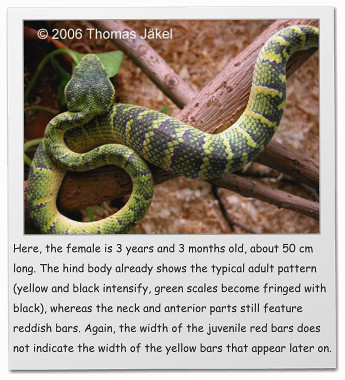
Female Wagler’s vipers from Thailand appear to develop slower than Sumatran females
(see Table below), which may complete ontogenetic change at 2 years of age. It also appears
that adult Sumatran females can become longer and heavier than their Thai counterparts.
However, regardless of geographical origin, when females are only 2-3 years old, they are probably
not ready for breeding. I never found gravid females of this stage in the wild. Gravid females
were usually about 60-100 cm long.
The table (below) shows a comparison of increase of body weight between individuals from
southern Thailand and northern Sumatran, all born and raised in captivity.
Interestingly, the divergence in growth rates between males and females can set in after one
year already, in the case of Sumatran vipers. In contrast, Thai individuals show this split after
3 years. After 3 years, Sumatran females are much heavier (at around 50 cm body length)
than their Thai counterparts.

Similar to Thai populations, Western Malaysian temple pit vipers also appear to develop slower.
In the following example, transition to adult coloration was not complete after 3 years.




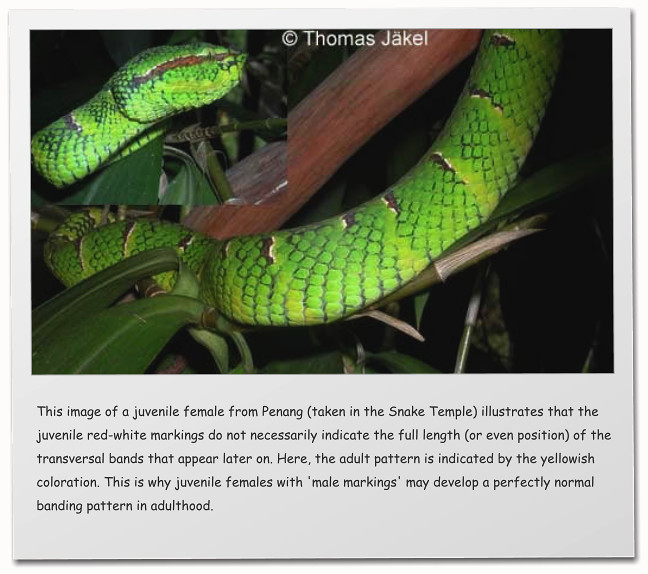



© 2004-2021 Thomas Jäkel

Wagler’s Viper Site -
Natural History
© 2004-2018 Thomas Jäkel

Borneo








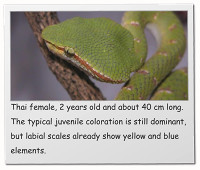
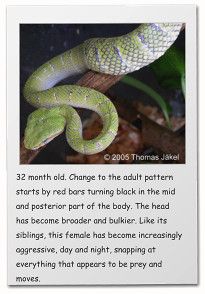
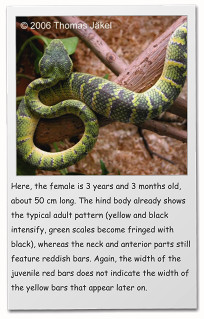
Female Wagler’s vipers from Thailand appear to develop
slower than Sumatran females
(see Table below), which may complete ontogenetic change at 2
years of age. It also appears that adult Sumatran females can become
longer and heavier than their Thai counterparts. However, regardless
of geographical origin, when females are only 2-3 years old, they
are probably not ready for breeding. I never found gravid females
of this stage in the wild. Gravid females were usually about
60-100 cm long.
The table (below) shows a comparison of increase of body weight
between individuals from southern Thailand and northern Sumatran,
all born and raised in captivity.
Interestingly, the divergence in growth rates between males and
females can set in after one year already, in the case of Sumatran
vipers. In contrast, Thai individuals show this split after 3 years. After
3 years, Sumatran females are much heavier (at around 50 cm
body length) than their Thai counterparts.

Similar to Thai populations, Western Malaysian temple pit vipers also
appear to develop slower. In the following example, transition to adult
coloration was not complete after 3 years.








- Home
- Wagler's Viper Site (WVS)
- General Husbandry - WVS
- Breeding - WVS
- Health Problems - WVS
- Taxonomy and Phylogenetics - WVS
- Biology - WVS
- Geographic Variability - WVS
- How Females Change - WVS
- Venom - WVS
- Image Map - WVS
- Special: T. laticinctus - WVS
- Special: North Sumatra - WVS
- Special: Video on Mating - WVS
- Special: North Sulawesi - VVS
- Biological Rodent Control - BRC
- Rodent Management Laos - BRC
- Gallery
- Contact









